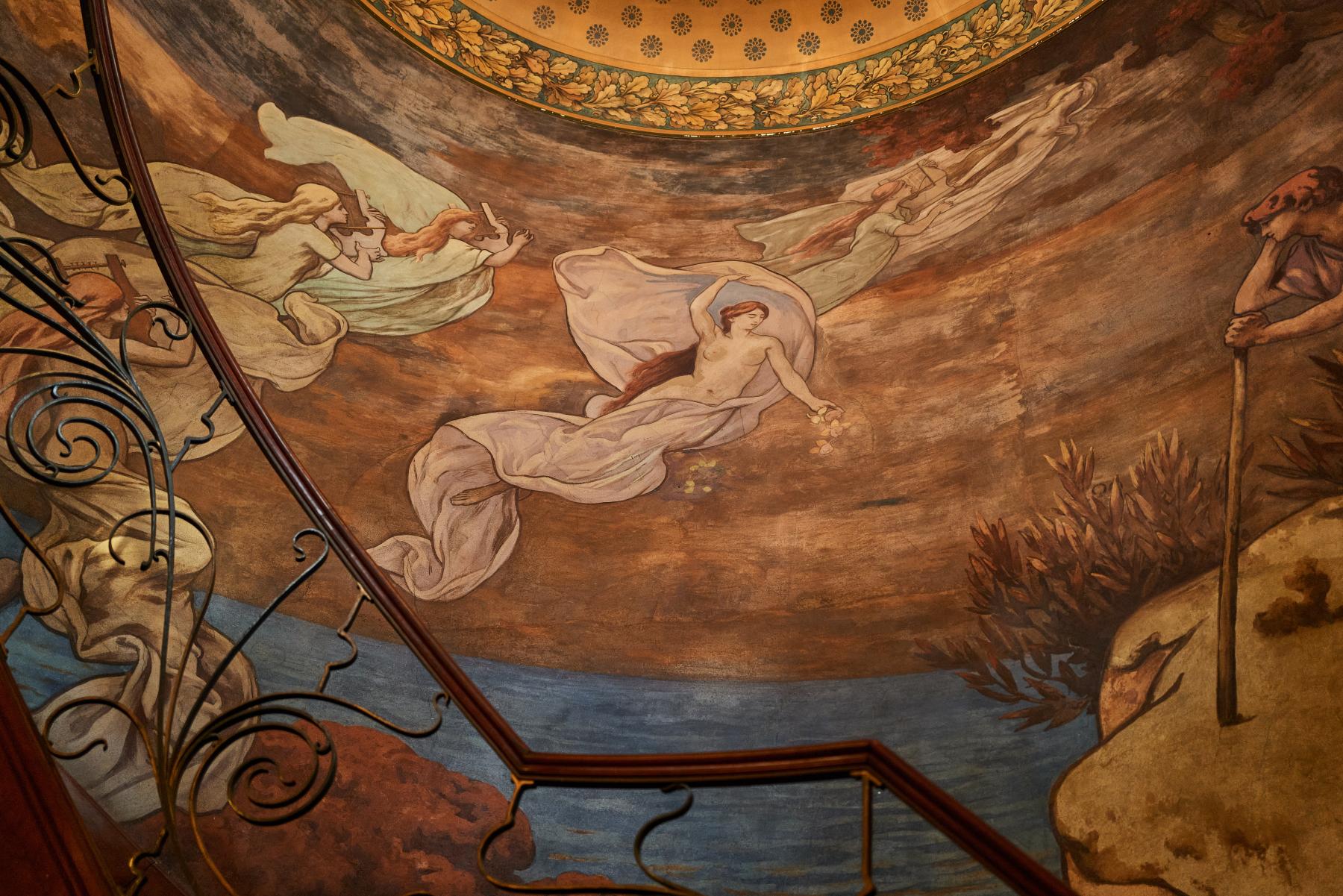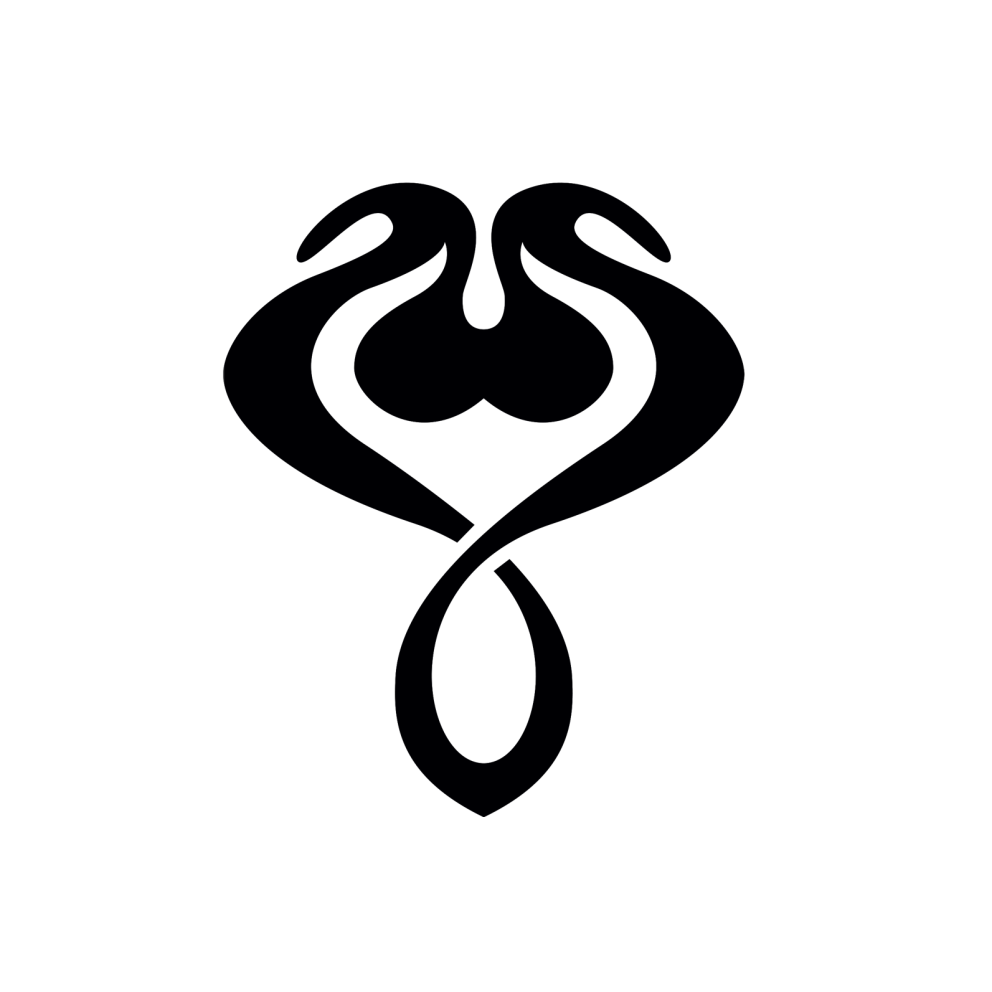Henry van de Velde is considered one of the great theoreticians of Art Nouveau.
Dissatisfied with his work as a painter, from 1892 onwards he seeks new means of artistic expression. The decorative and applied arts, which his companion Maria Sèthe also practices, become a field of experimentation for him, enabling him to assimilate the Arts and Crafts movement and to continue the process of reflection.
His theoretical vision, on which he gives lectures and publishes essays, covers a wide range of subjects such as the place of ornament, functionality or the production process. Anxious to associate technical progress with the production of quality utilitarian objects, he is one of the first, as early as 1894, to advocate the use of the industrial machine to relieve the work of workers and to encourage widespread distribution. In this sense, he can be considered the father of design in Belgium.
Henry van de Velde’s credo is “line is strength”. This signature characterises his creations: the line, organically inspired but abstract, builds and decorates the object. This is true in a wide variety of disciplines: furniture, silverware, ceramics, etc. From his career as a painter, he retains his talent for colour combinations and his ability to create unity in furniture, decoration, works of art and architecture.
In 1900 Henry van de Velde moves to Germany, where his work is highly regarded. In Weimar he founds a school of decorative arts with a new system of education, characterised by practical work and diversity of training. He did not return to Belgium until 1926. At the request of the Belgian government, he founds the La Cambre school in Brussels, which is similar to his school in Weimar. Henry van de Velde thus becomes the precursor of a whole new generation of Belgian artists for whom Art Nouveau is an impulse and remains a state of mind.
1.
Wallpaper untitled
in collaboration with Maria Sèthe (1867-1943)
Mural reproduction by the Atelier d’Offard
1893-1896
Fonds van de Velde. ENSAV - La Cambre, Bruxelles
© SABAM Belgium 2023
2.
Wallpaper Tulipes
in collaboration with Maria Sèthe (1867-1943)
Reproduction
1893-1896
Fonds van de Velde. ENSAV - La Cambre, Bruxelles
© SABAM Belgium 2023
3.
Wallpaper Campanules
in collaboration with Maria Sèthe (1867-1943)
Reproduction
1893-1896
Fonds van de Velde. ENSAV - La Cambre, Bruxelles
© SABAM Belgium 2023
4.
Wallpaper motif dynamo-graphique
in collaboration with Maria Sèthe (1867- 1943)
Reproduction
1893-1896
Fonds van de Velde. ENSAV - La Cambre, Bruxelles
© SABAM Belgium 2023
5.
Wallpaper untitled
in collaboration with Maria Sèthe (1867-1943)
Reproduction
1893-1895
Fonds van de Velde. ENSAV - La Cambre, Bruxelles
© SABAM Belgium 2023
7.
Sellette for Louis Bauer
1896
padouk
Private collection, Brussels
8.
Armchair for Louis Bauer
1896
padouk, textile
Private collection, Brussels
9.
Display case
ca. 1896
padouk, white and colored glass
Design Museum Gent
10.
Piano bench for the artist’s personal home Les Hauts Peupliers (Weimar-Ehringsdorf, Germany)
1902
varnished pine
Design Museum Gent
11.
Chair for the Maison De Craene-van Mons
ca. 1899
brass, velvet, padauk
Design Museum Gent
12.
Model “E 118” ceiling light
ca. 1904
polished brass, glass
Klassik Stiftung Weimar
13.
Tiles (x 2)
Alexandre Bigot & Compagnie
1899
stoneware
Design Museum Gent
14.
Tile
Alexandre Bigot & Compagnie
1895
stoneware
Design Museum Gent
15.
The artist’s menu holder
1911
silver
Design Museum Gent
16.
Ring
1899
yellow and red gold, platinum, pearls and diamonds
King Baudouin Foundation Collection
Fonds Léon Courtin - Marcelle Bouché
on deposit at the Art & History Museum
17.
Toothpick holder
1901
silver-plated metal
Design Museum Gent
18.
The artist’s tie pin
ca. 1900
silver
Design Museum Gent
19.
Inkwell
1898
bronze
Design Museum Gent
20.
Gravy boat, plate and bread plate
Meissen Porcelain Manufactory
1903-1904
porcelain
Design Museum Gent
21.
Cup, saucer and plate for breakfast service
Burgau Porcelain Manufactory
1906
porcelain
Design Museum Gent
22.
Coffee spoon
1900-1999
silver
Design Museum Gent
23.
Model “I” pie server, sauce spoon, fruit fork, fish knife, fish fork and salt spoon
1902-1906
silver, vermeil
Design Museum Gent
24.
Model “III” dessert knife, fork and spoon
1910-1911
silver
Design Museum Gen
25.
Model “II” fork, spoon, dessert knife and knives
1905-1906
silver
Design Museum Gent
26.
Preparatory drawing for the cover of L'Art de la reliure en France aux derniers siècles by Edouard Fournier (1819-1880)
ca. 1893-1895
tracing paper, canvas, carbon, India ink, pencil
King Baudouin Foundation Collection, on deposit at the Wittockiana
27.
Mock-up “n°551” for unknown bookbinding
ca. 1898
pencil on vellum, canvas, pencil
King Baudouin Foundation Collection, on deposit at the Wittockiana
28.
Artist's personal folder with Campanule paper,
ca. late 1895, paper, card, cotton,
Collection Pascal and Louise de Sadeleer
29.
« Henry van de Velde »
L’Art décoratif, vol. I, J. Meier-Graeffe (Ed.)
Paris, october 1898 - march 1899
p. 8-9
Hortamuseum Collection, St Gilles / Gillis
30.
Cover for the first volume of Van Nu en Straks
A. Vermeylen,
Antwerp, January 1896
print on paper
Maison Hannon collection






